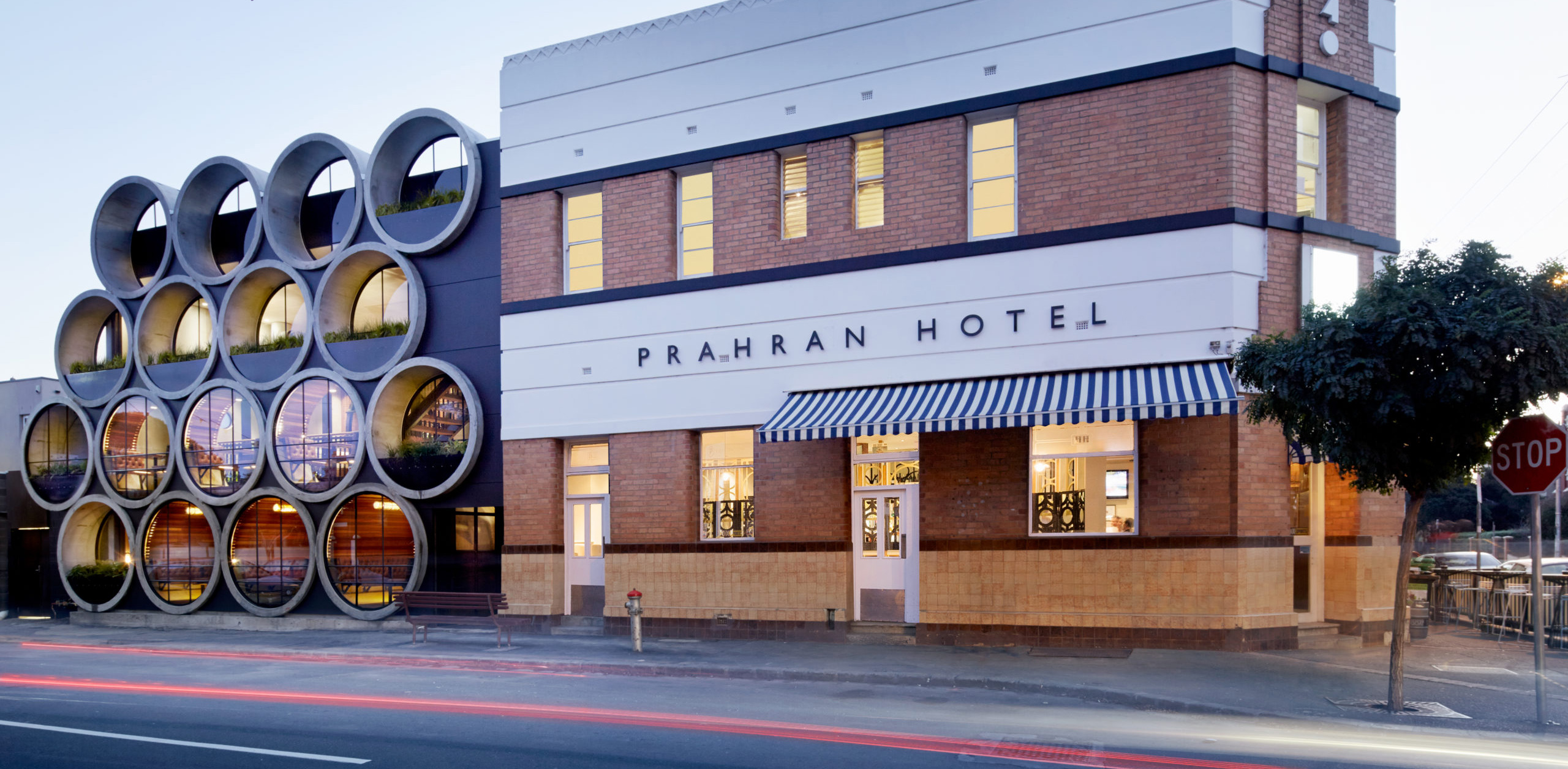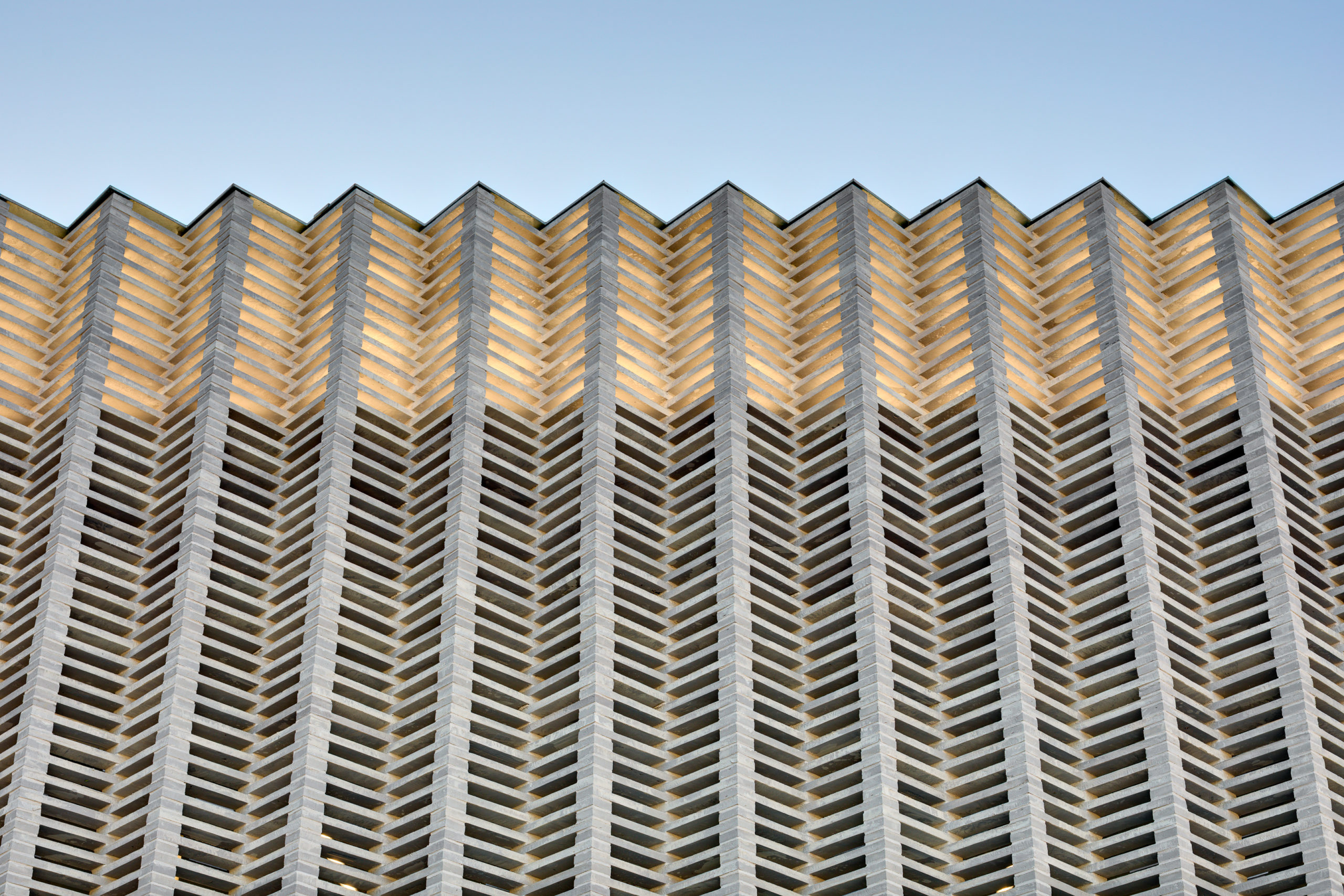Last chance: The 14th Architizer A+Awards celebrates architecture's new era of craft. Apply for publication online and in print by submitting your projects before the Final Entry Deadline on January 30th!
An Irish pub or a cocktail bar, a late-night club or the hotel lobby. Wherever you find yourself in the late hours of the day, needless to say, bars and nightclubs are spaces that play an essential role in the lives of billions of people. Often recognized as institutions, they are spaces of socialization, culture, entertainment and, importantly, employment. While our relationship with alcohol consumption may be changing, bars and nightclubs remain essential spaces. They are keystones for a thriving economy and human welfare.
Of all the industries affected by the COVID-19 pandemic, the hospitality industry was the hardest hit. Doors were closed, stock abandoned, and businesses fought for survival. Unpredictably, however, the bounce-back has not been as abundant as was expected. After almost two years, public attitudes towards going out have changed, new habits have developed and, once a demand, stay-at-home has now become a preference for many. Coupled with a considerable loss of available staff — people who were forced to move on to other industries to pay bills but who now see no reason to return — the bar and nightclub industry continues to struggle to recenter itself as a fundamental part of daily life.
The challenge for establishment owners and the designers who realize their vision is one that I predict will take a long time to overcome. How should the bars and nightclubs of the future function, and what does that look like? While our relationship with these spaces continues to change and develop, we look back at some of the finest examples of Bar and Nightclub design from the last decade, celebrating the spaces that they have been and wondering what will they be going forward into the unknown future.
2012 – 2013: VINORAMA
Atelier Daniel Schlaepfer, fournier-maccagnan | Rivaz, Switzerland
Jury Winner, 2013 A+Awards, Bars & Nightclubs
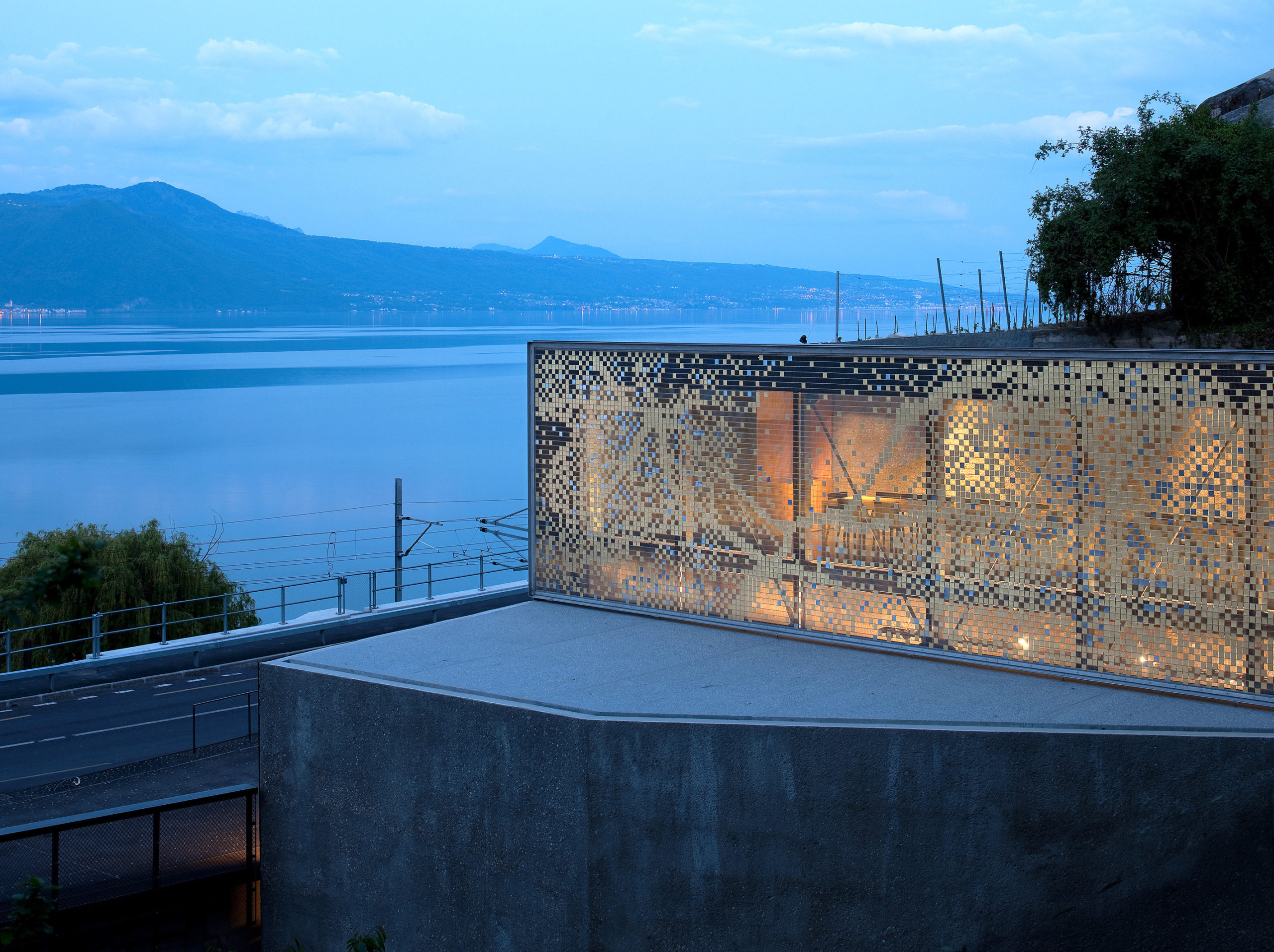
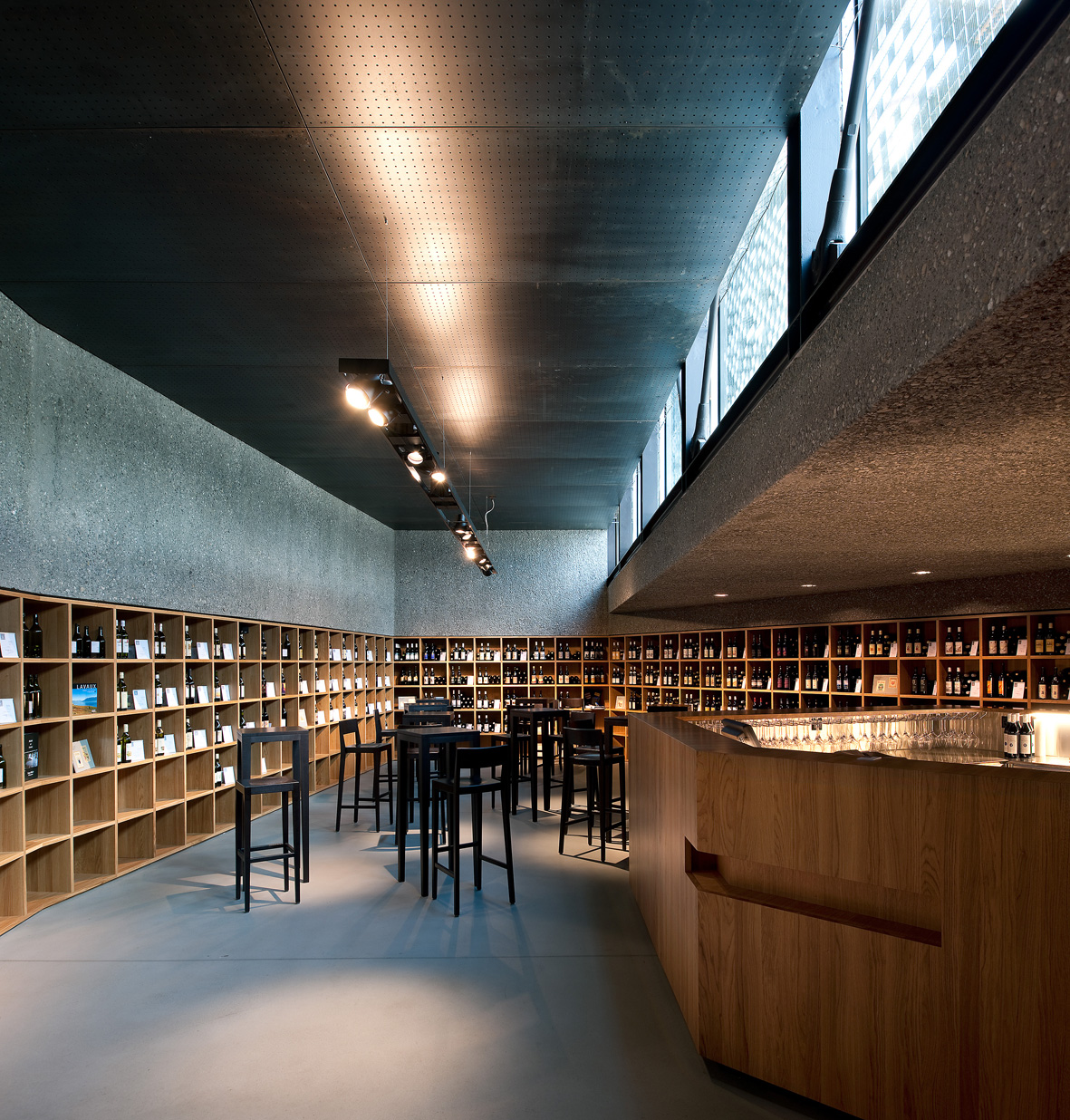 A truly unique place, Vinorama is a center developed solely for the discovery of the wines and terraced vineyards of the Lavaux region of Switzerland. Located in a UNESCO world heritage site, the building is expertly designed to tactfully integrate with the surrounding landscape.
A truly unique place, Vinorama is a center developed solely for the discovery of the wines and terraced vineyards of the Lavaux region of Switzerland. Located in a UNESCO world heritage site, the building is expertly designed to tactfully integrate with the surrounding landscape.
The hanging steel facade represents the grapevines and provides privacy from the exterior while allowing light to flow into the cliffside venue, while the interior spaces are entirely dedicated to wine. Indeed, a reception with a wine-tasting bar is the central element of the concept. There are bespoke designed pigeonholes that showcase bottles and the warm oak materiality is reminiscent of wine barrels and provides acoustic relief to the otherwise hard space.
2014: Prahran Hotel
Techne Architects | Melbourne, Australia
Jury Winner, 2014 A+Awards, Hospitality – Bars & Nightclubs
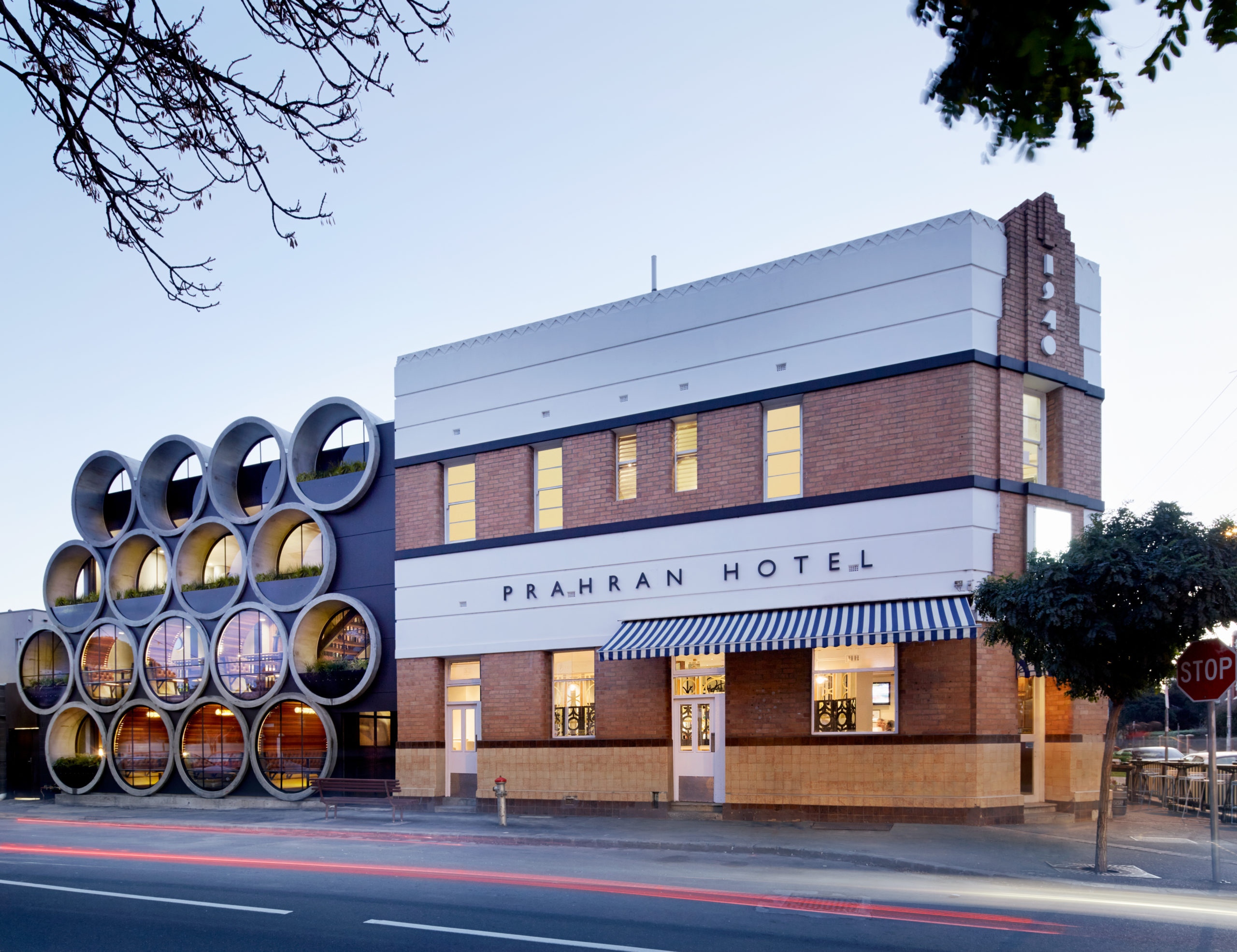
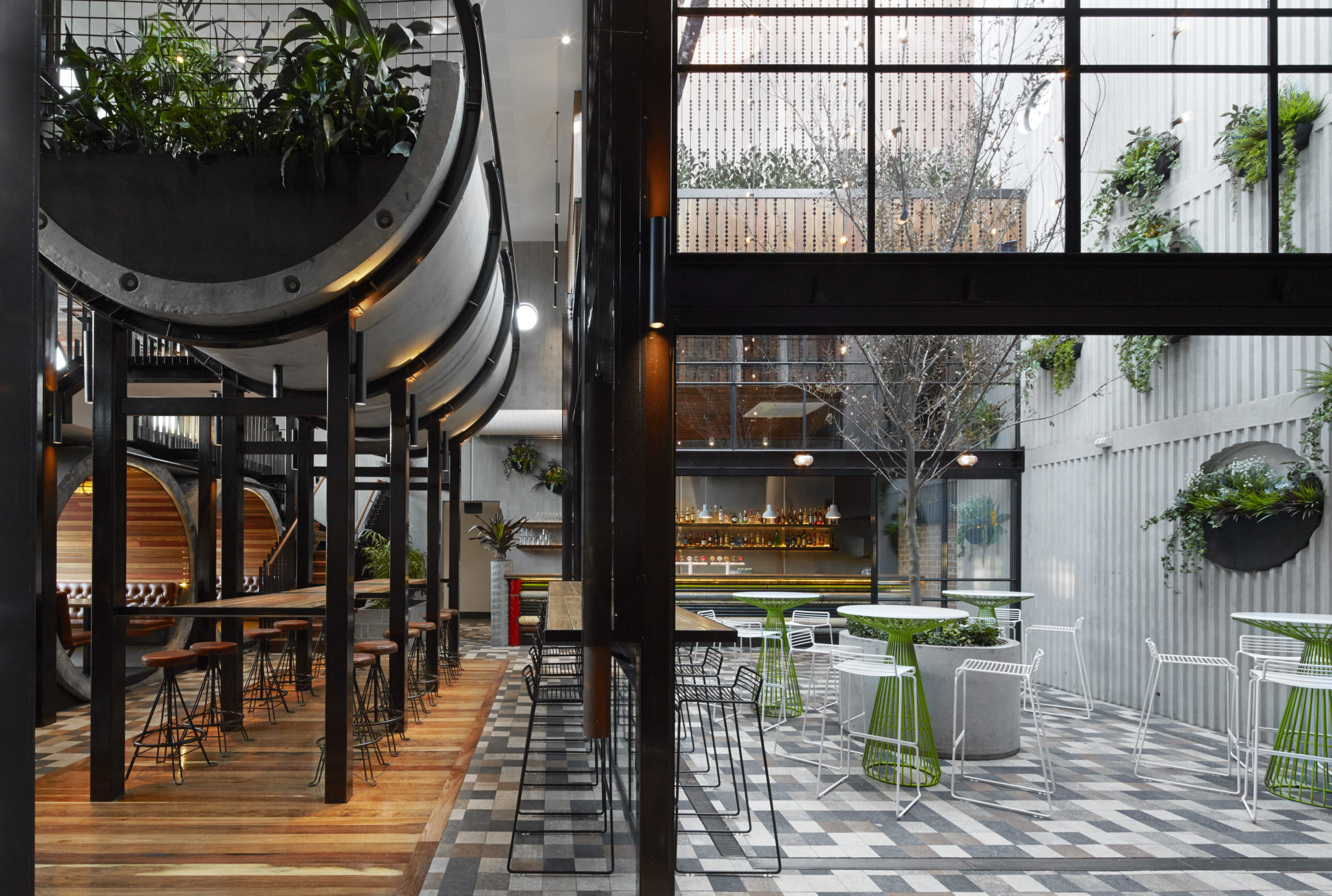
The Prahran Hotel has long been an institution of the local community. First established as a pub in the 1800s and having undergone many renovations in its lifetime, the older section of the building is striking with its Art Deco design.
With its latest redevelopment by Techne Architects, the building gained a unique, double-height rear extension composed of stacked concrete pipes. A steel-glazed courtyard cuts through the rear of the space, providing much-needed natural light. Concrete pipes are used for decor throughout and much of the steel structure is exposed to achieve the intended industrial pallet.
2015: :PM Club
MODE | Sofia, Bulgaria
Popular Choice Winner, 2015 A+Awards, Bars & Nightclubs
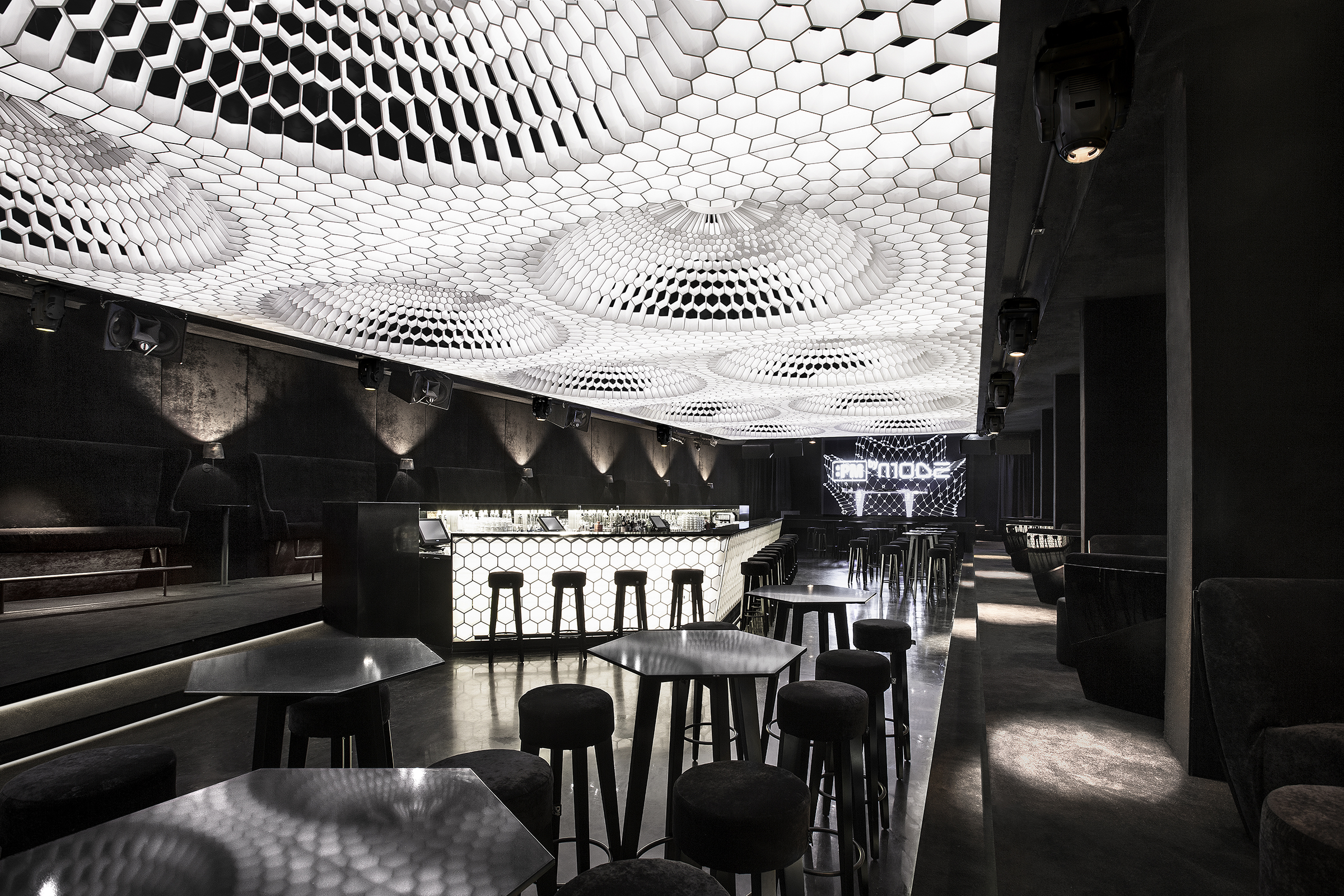
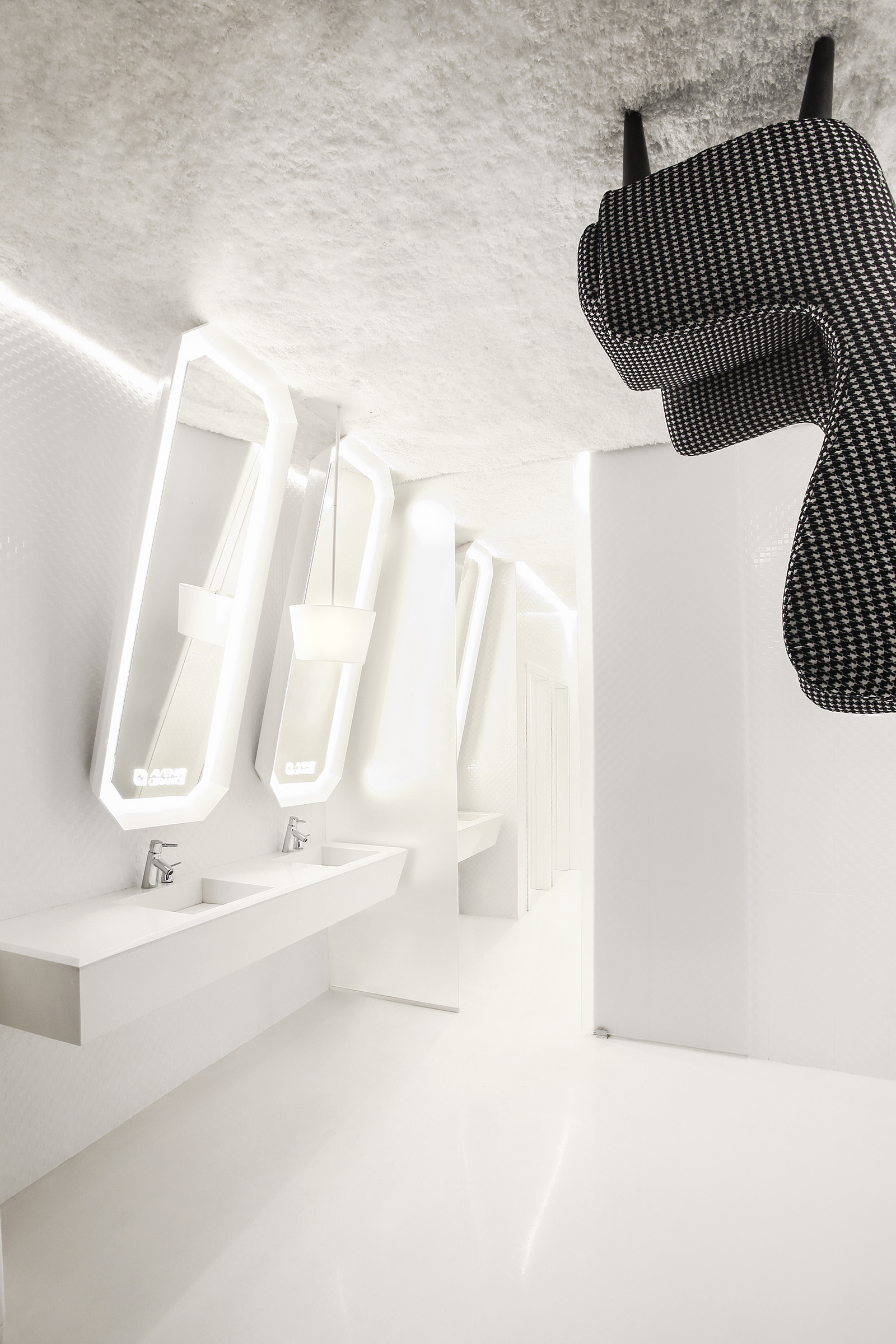
Regarded as one of the top nightclubs in Sofia, :PM Club is one of many show-stopping nightclubs designed by MODE. With a “light mural” overhead :PM club uses its pixelated domes to create atmosphere and reflect the music. The monochromatic design pallet relies on textures over colors to establish an interesting aesthetic. At the same time, unique design features highlight that the late-night establishment doesn’t take itself too seriously and is a space for fun and exploration.
2016: Charles Smith Wines Jet City
Olson Kundig | Seattle, WA, United States
Jury Winner, 2016 A+Awards, Bars & Nightclubs
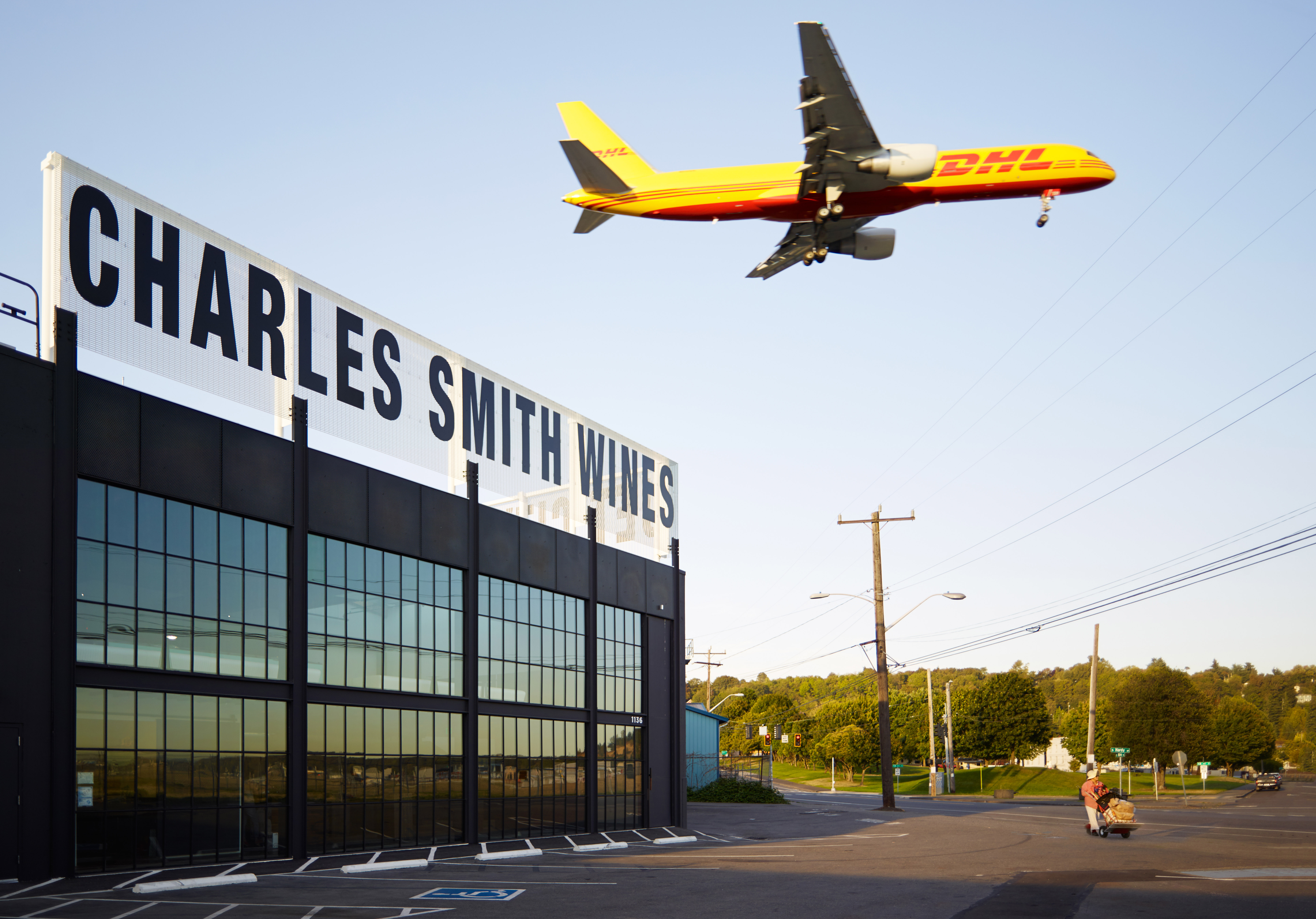
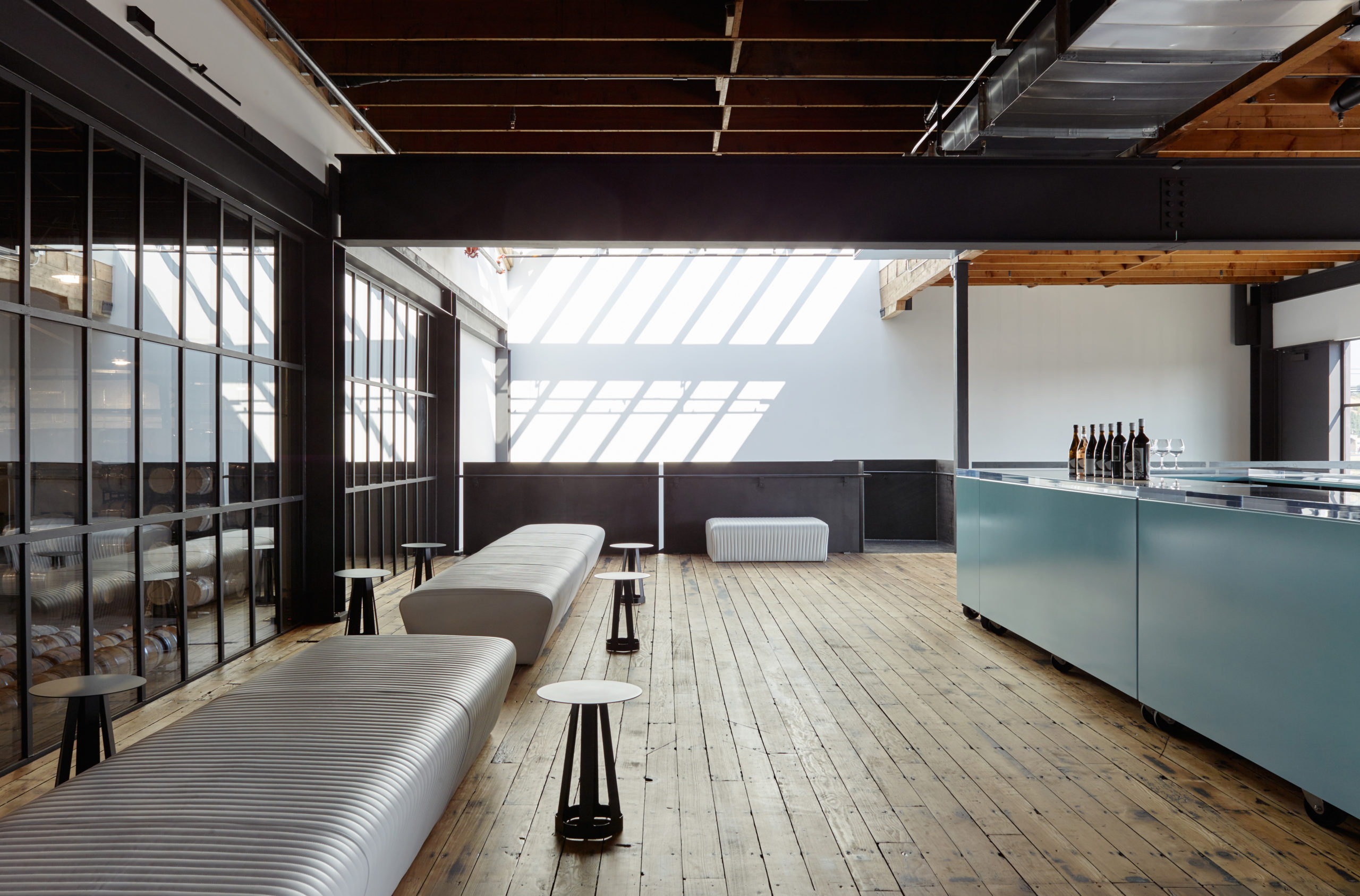
Originally constructed to house a Dr. Pepper bottling plant and later a recycling center, the design of the Charles Smith Wines Jet City preserves much of the building’s industrial heritage. Composed of two main structures — a two-floor office building and a contiguous open-structure steel truss warehouse — the building houses everything for top wine production, including grape crush, barrel storage, bottling area alongside tasting rooms and sales space. The interior aesthetic encapsulates a minimalist, industrial style, which allows for large open spaces and adaptability. There are nods to the aviation industry throughout, which are references to the adjacent airstrip.
2017: DeHui Tea Space
Space Modification Unit | Beijing China
Jury Winner and Popular Choice Winner, 2017 A+Awards, Bars & Nightclubs
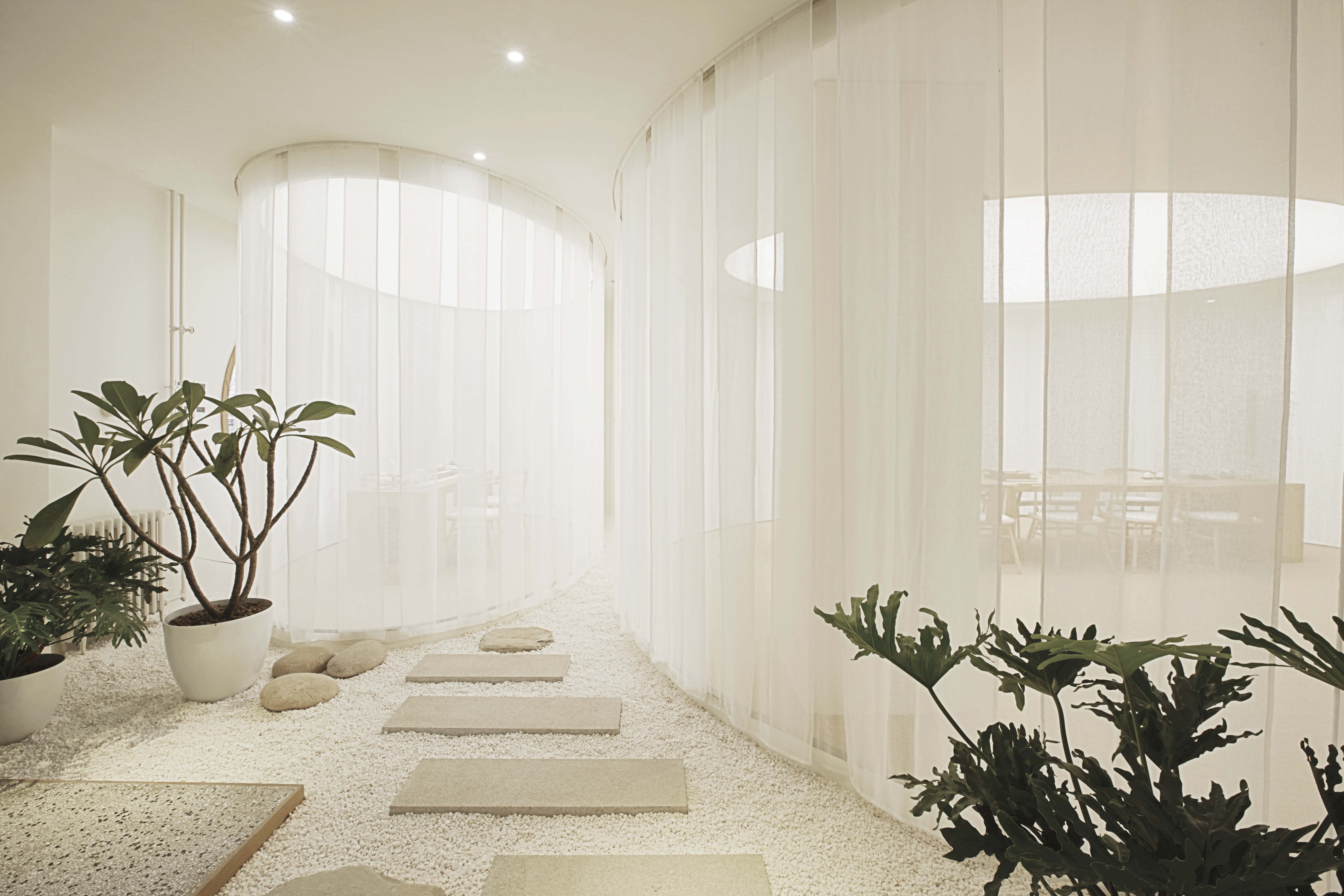
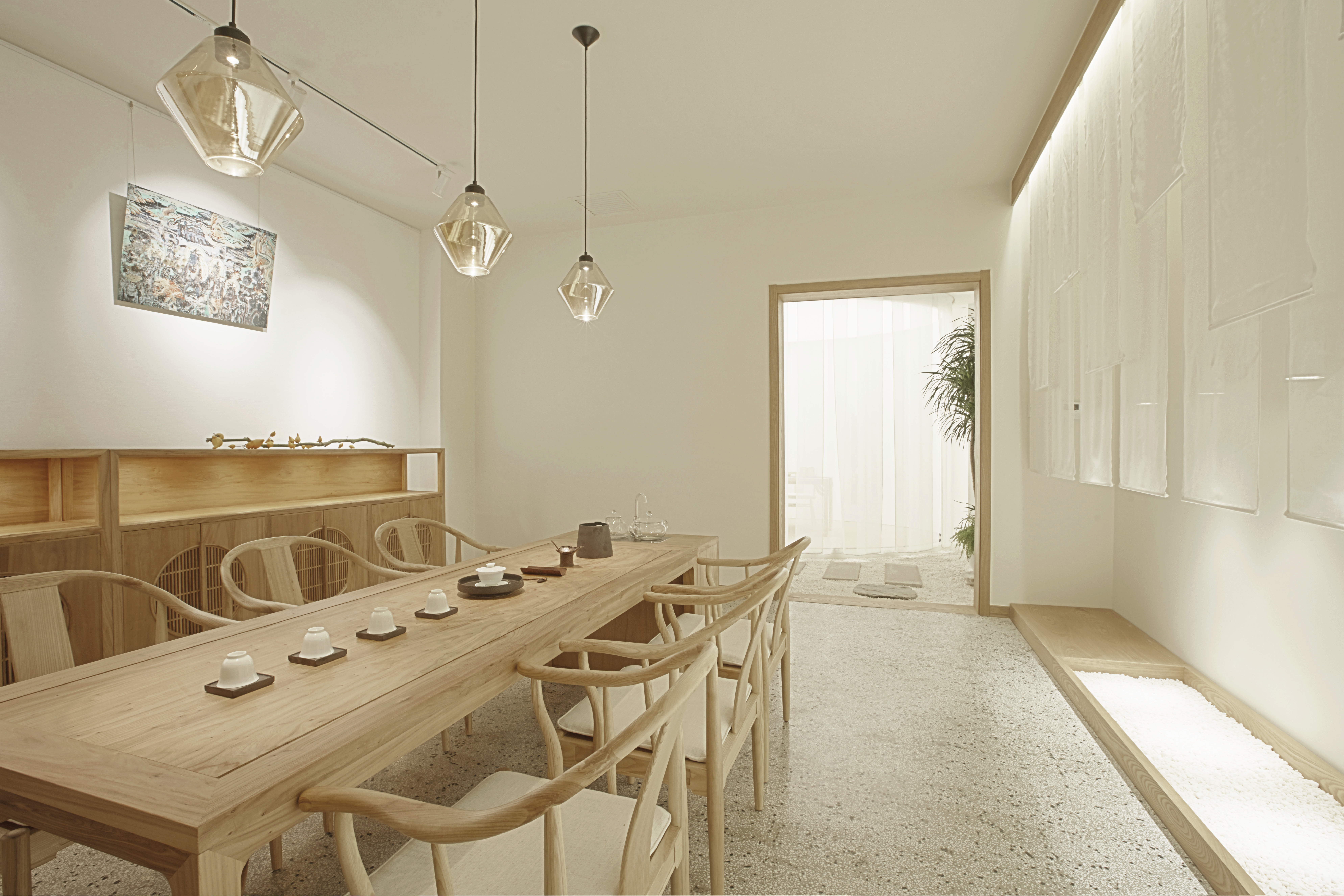 Designed to be a tranquil oasis amidst its bustling city surroundings, DeHui Tea Space is a multifunctional space that can transform and accommodate a multitude of offerings. The tea shop has a mindful and contemporary style while the use of white linen as partitions brig softness alongside an ethereal quality that is present throughout. The introduction of biophilia, stones and sand embody a naturalistic atmosphere not present beyond the sanctuary walls. There is a lack of natural light, yet the space seems airy and bright due to the clever use of artificial LED fittings.
Designed to be a tranquil oasis amidst its bustling city surroundings, DeHui Tea Space is a multifunctional space that can transform and accommodate a multitude of offerings. The tea shop has a mindful and contemporary style while the use of white linen as partitions brig softness alongside an ethereal quality that is present throughout. The introduction of biophilia, stones and sand embody a naturalistic atmosphere not present beyond the sanctuary walls. There is a lack of natural light, yet the space seems airy and bright due to the clever use of artificial LED fittings.
2018: PM Club 2
Mode | Sofia, Bulgaria
Jury Winner and Popular Choice Winner, 2018 A+Awards, Bars & Nightclubs
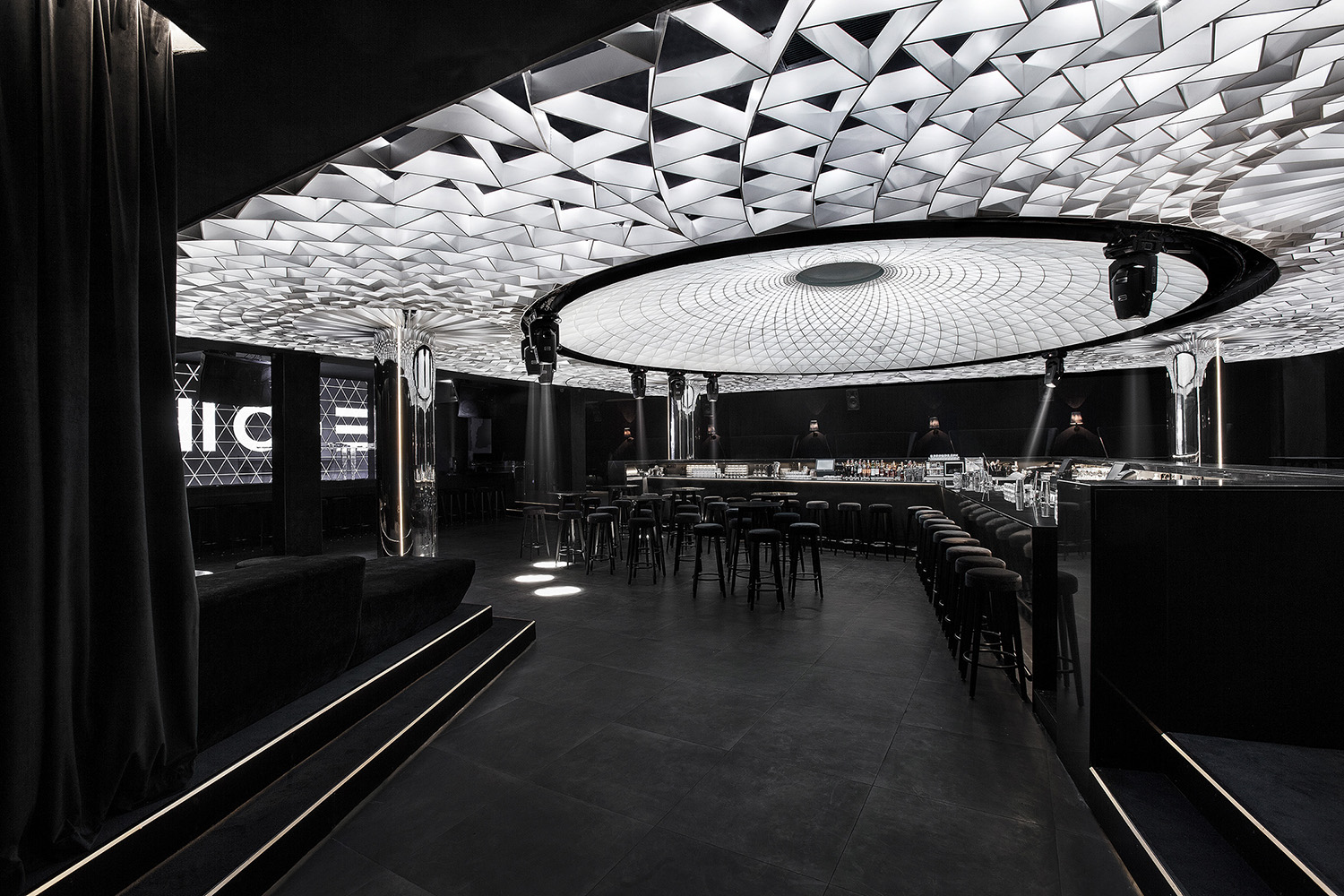
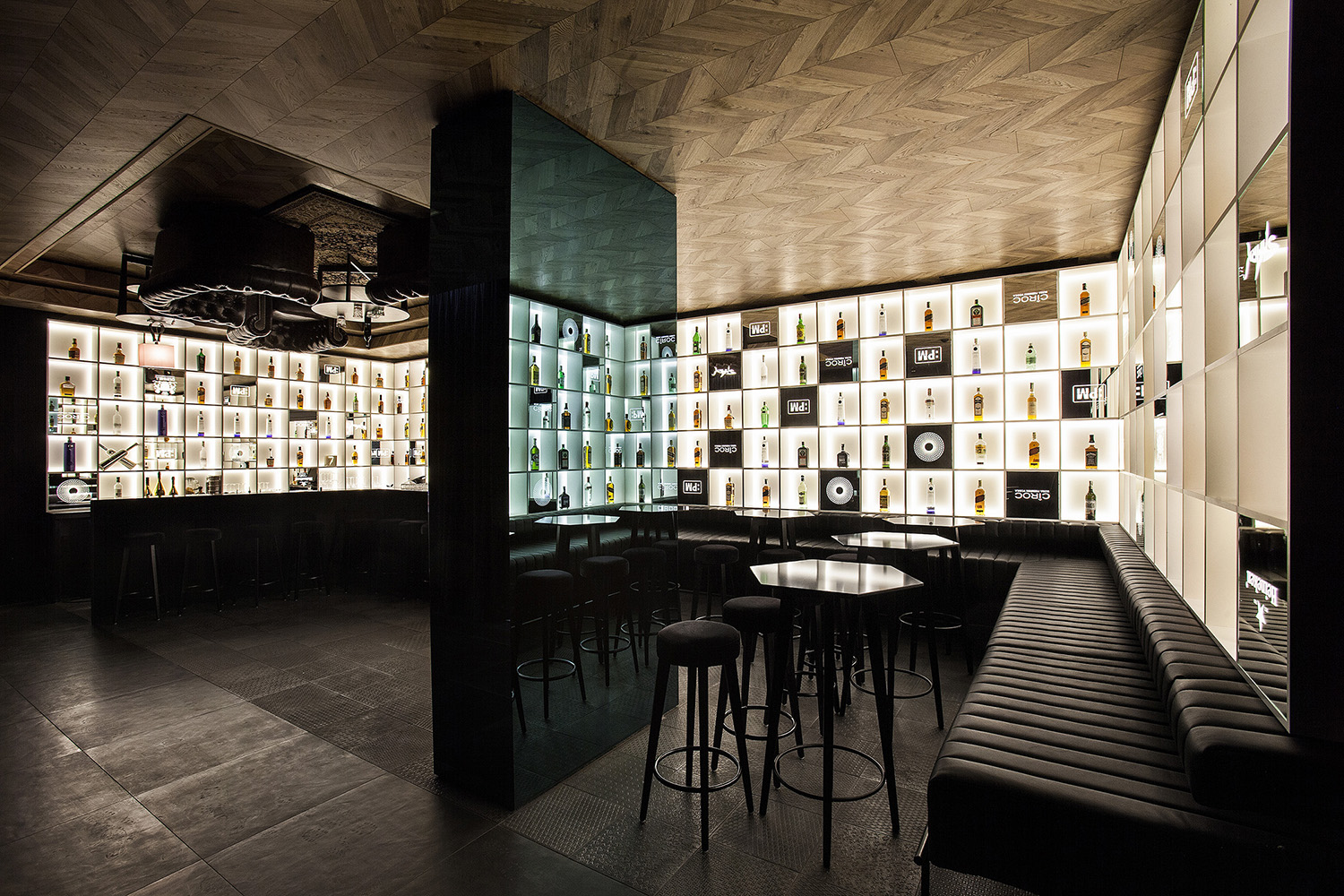 Following on from its sister venue :PM Club, PM Club 2 is the subsequent development of the MODE design teams exploration of nightclub venues. Located on the ground floor of an old hotel building, the club is a Mecca to music. The perfectly square space proved difficult from an organizational perspective but was carefully considered to create distinct zones beneath a signature light dome.
Following on from its sister venue :PM Club, PM Club 2 is the subsequent development of the MODE design teams exploration of nightclub venues. Located on the ground floor of an old hotel building, the club is a Mecca to music. The perfectly square space proved difficult from an organizational perspective but was carefully considered to create distinct zones beneath a signature light dome.
2019: Dongshang
Imafuku Architects | Beijing, China
Popular Choice Winner, 2019 A+Awards, Bars & Nightclubs
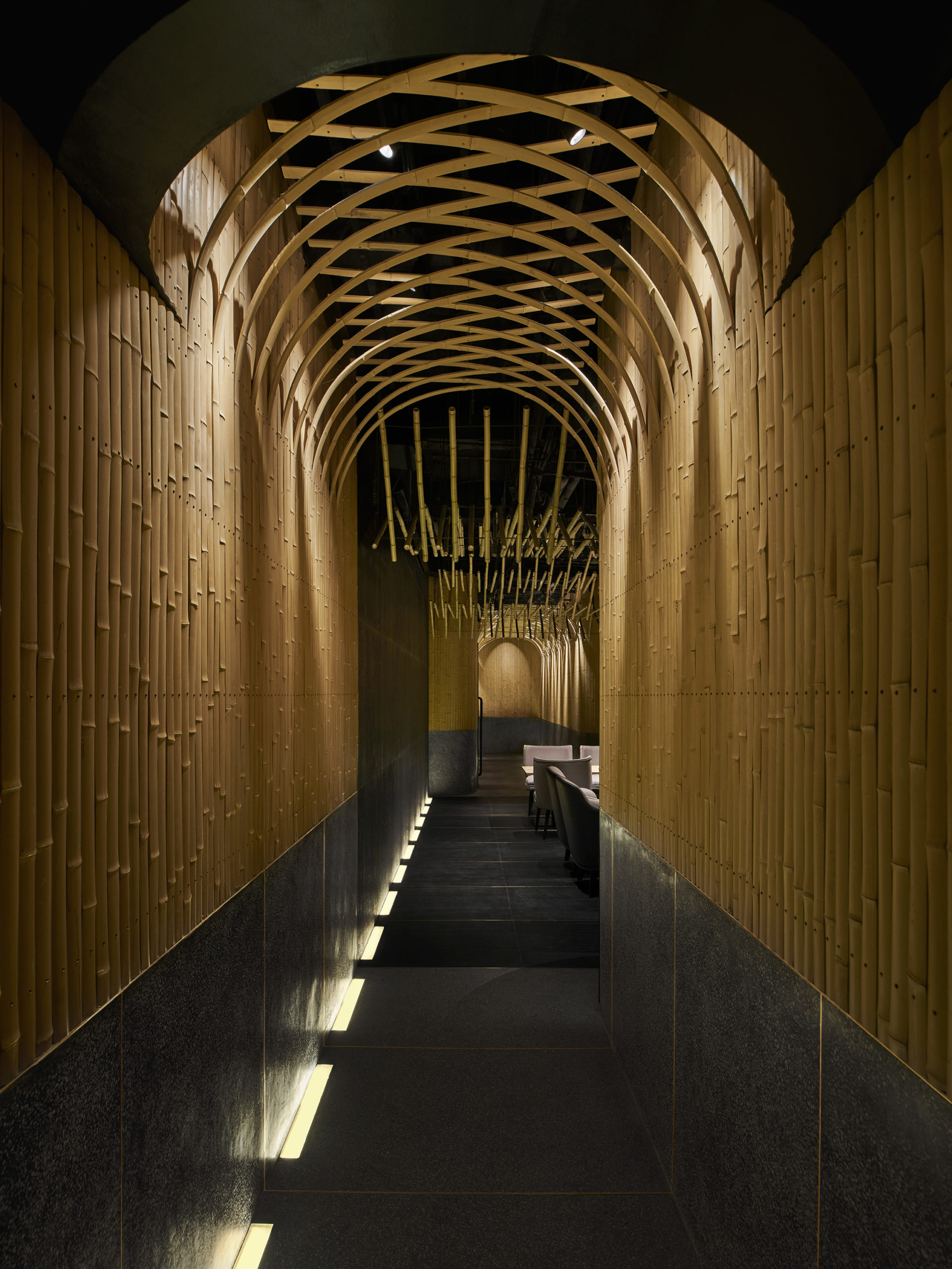
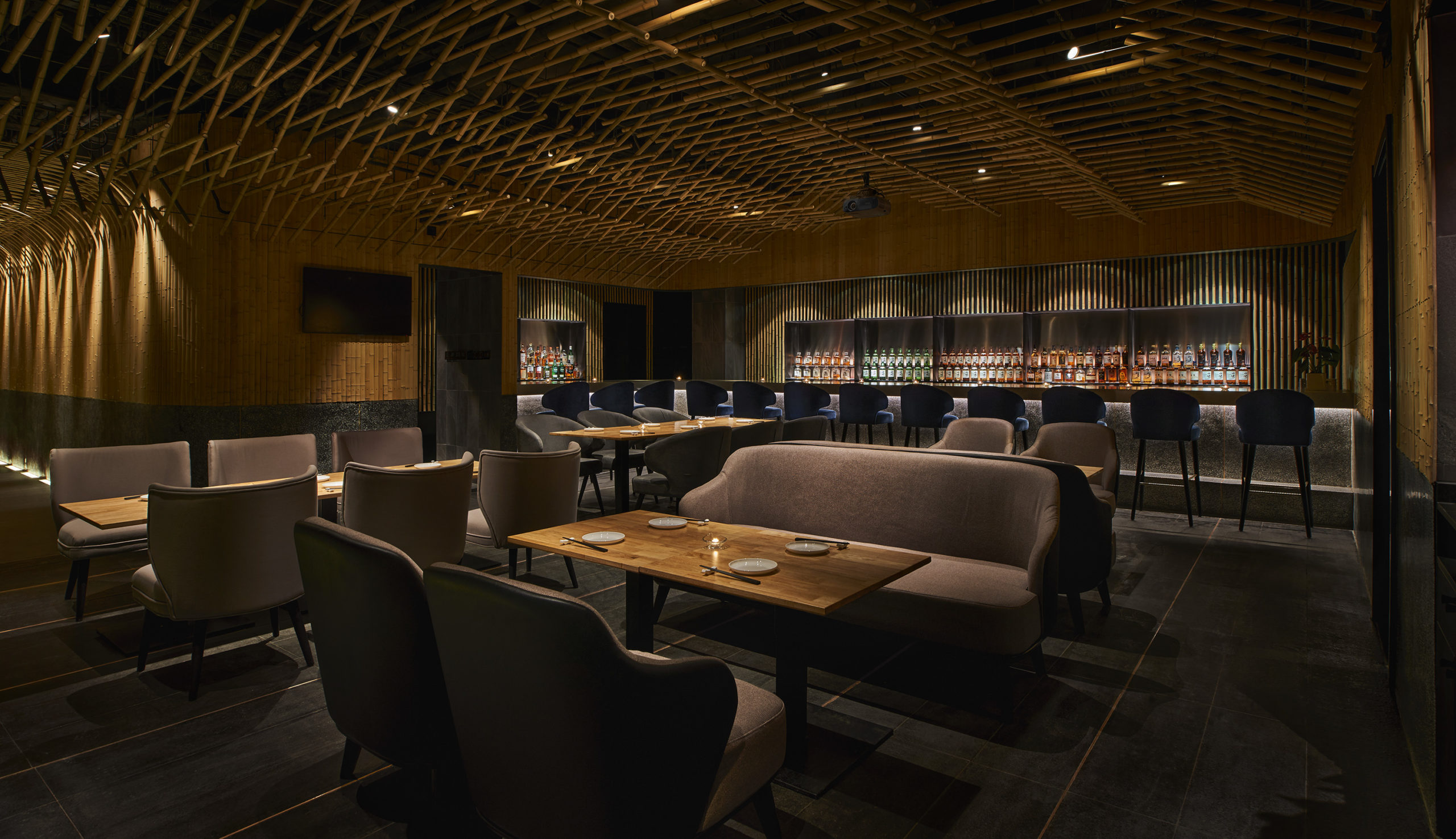 Dongshang is a contemporary Japanese restaurant that blends many forms of the Eastern heritage, culture and aesthetics. The bamboo-clad interior has strong connections to both Chinese and Japanese arts and crafts. The design team has used the material liberally as wall covering and to create intimate areas by lowering the ceiling height. The interwoven bamboo paired with the light program creates beautiful light wells and shadow patterns while also adding improved acoustic qualities to the space.
Dongshang is a contemporary Japanese restaurant that blends many forms of the Eastern heritage, culture and aesthetics. The bamboo-clad interior has strong connections to both Chinese and Japanese arts and crafts. The design team has used the material liberally as wall covering and to create intimate areas by lowering the ceiling height. The interwoven bamboo paired with the light program creates beautiful light wells and shadow patterns while also adding improved acoustic qualities to the space.
2020: Bar Lotus
Office AIO | Shanghai, China
Jury Winner, 2020 A+Awards, Bars & Nightclubs
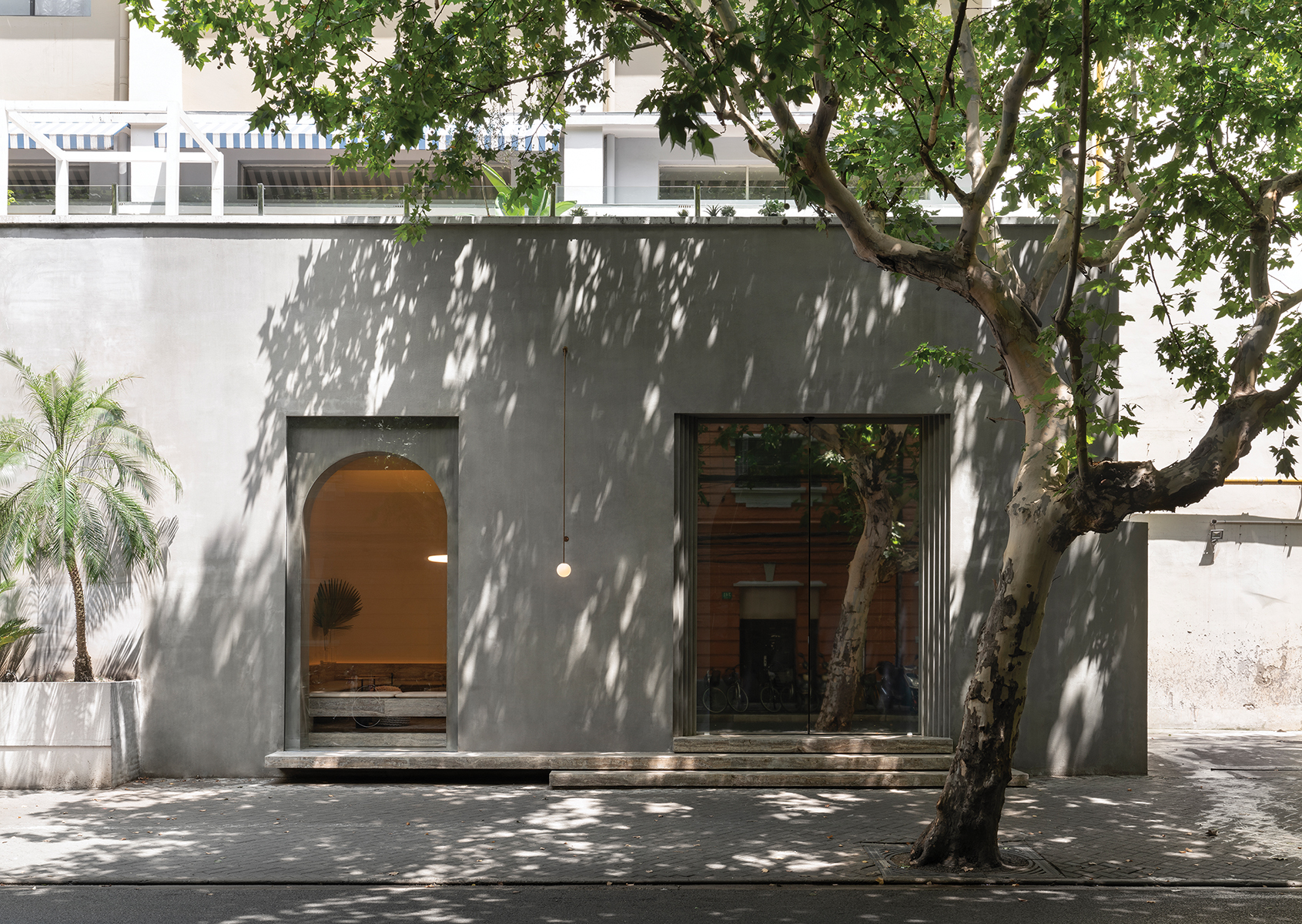
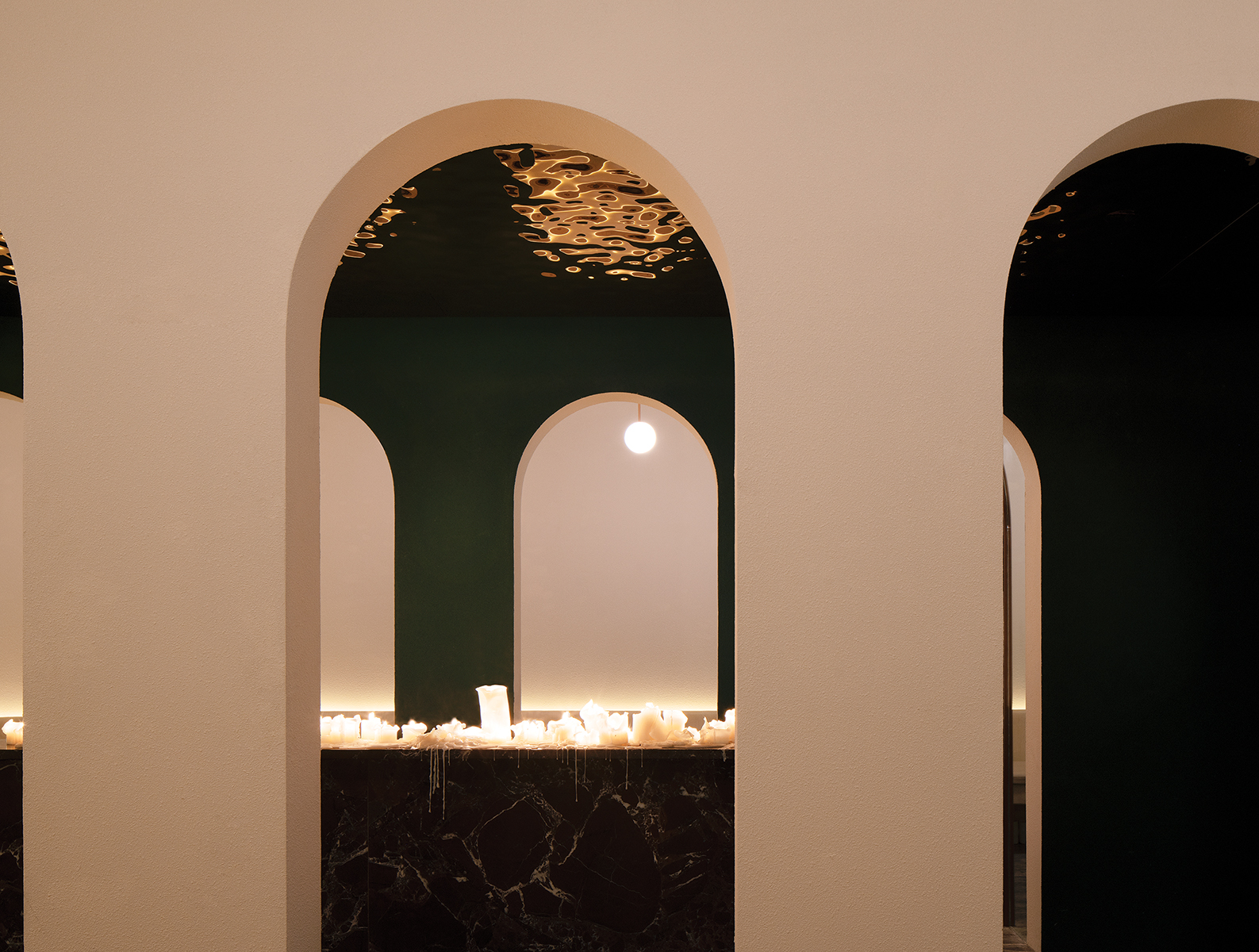
This adaptable space sets a precedent for a new era in design. Bar Lotus turns from cafe to bar as day turns into night, doubling its target audience. With very few windows, the southern street-facing room — boasting its large floor-to-ceiling arched window — was designed as a daytime coffee shop, a calm sanctuary from the street beyond.
In contrast, the windowless northern room towards the back of the building was designed as a nighttime cocktail bar with a rich ambiance and beautiful detailing. To complement the building’s concrete exterior, Office AIO chose a muted palette for the cafe interior, with a grey-hued travertine floor that extends halfway up the walls, beige leather seats and knitted soft furnishings with striking emerald green plaster walls used throughout.
2021: Hill Country Wine Cave
Clayton Korte | TX, United States
Jury Winner, 2020 A+Awards, Bars & Wineries
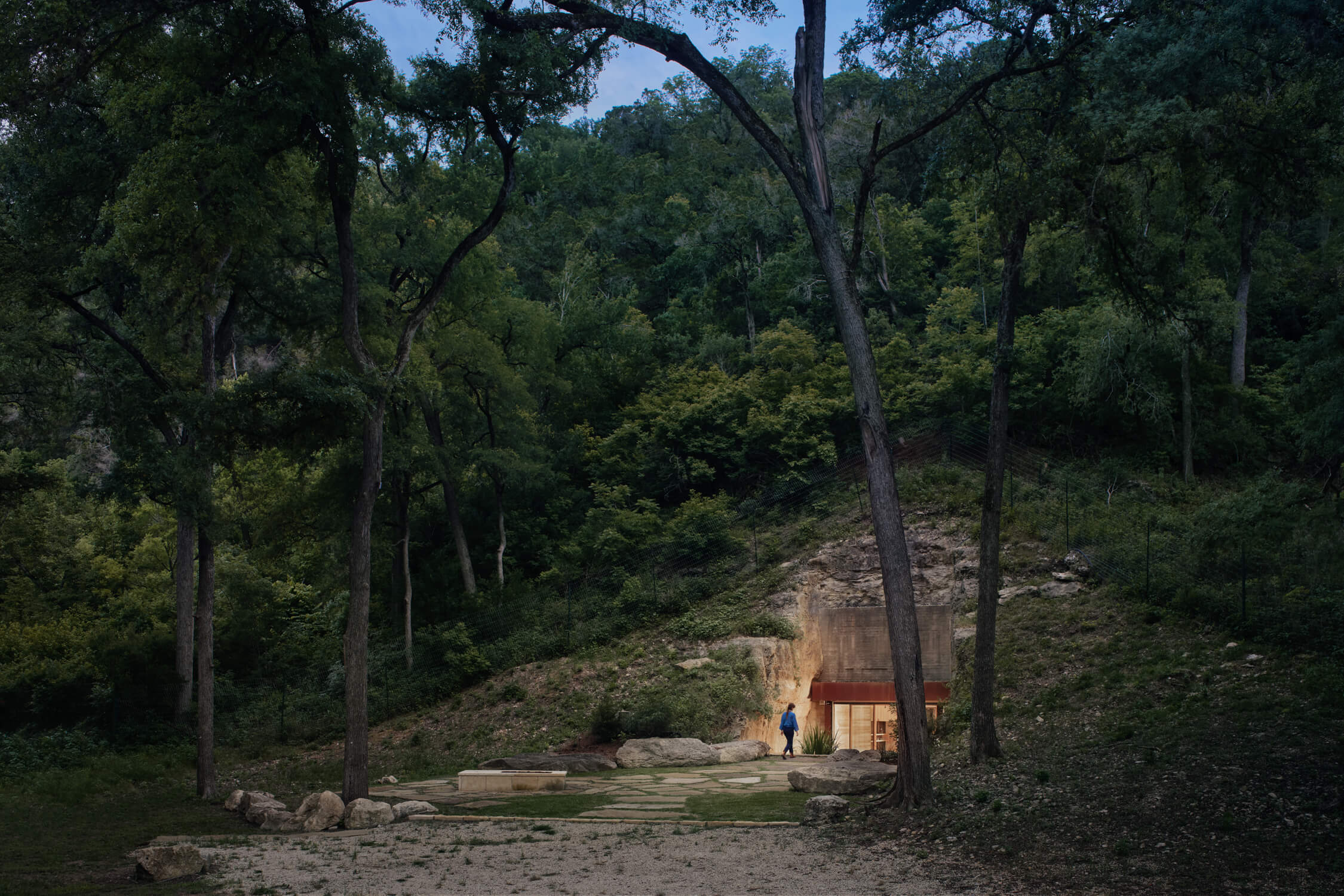
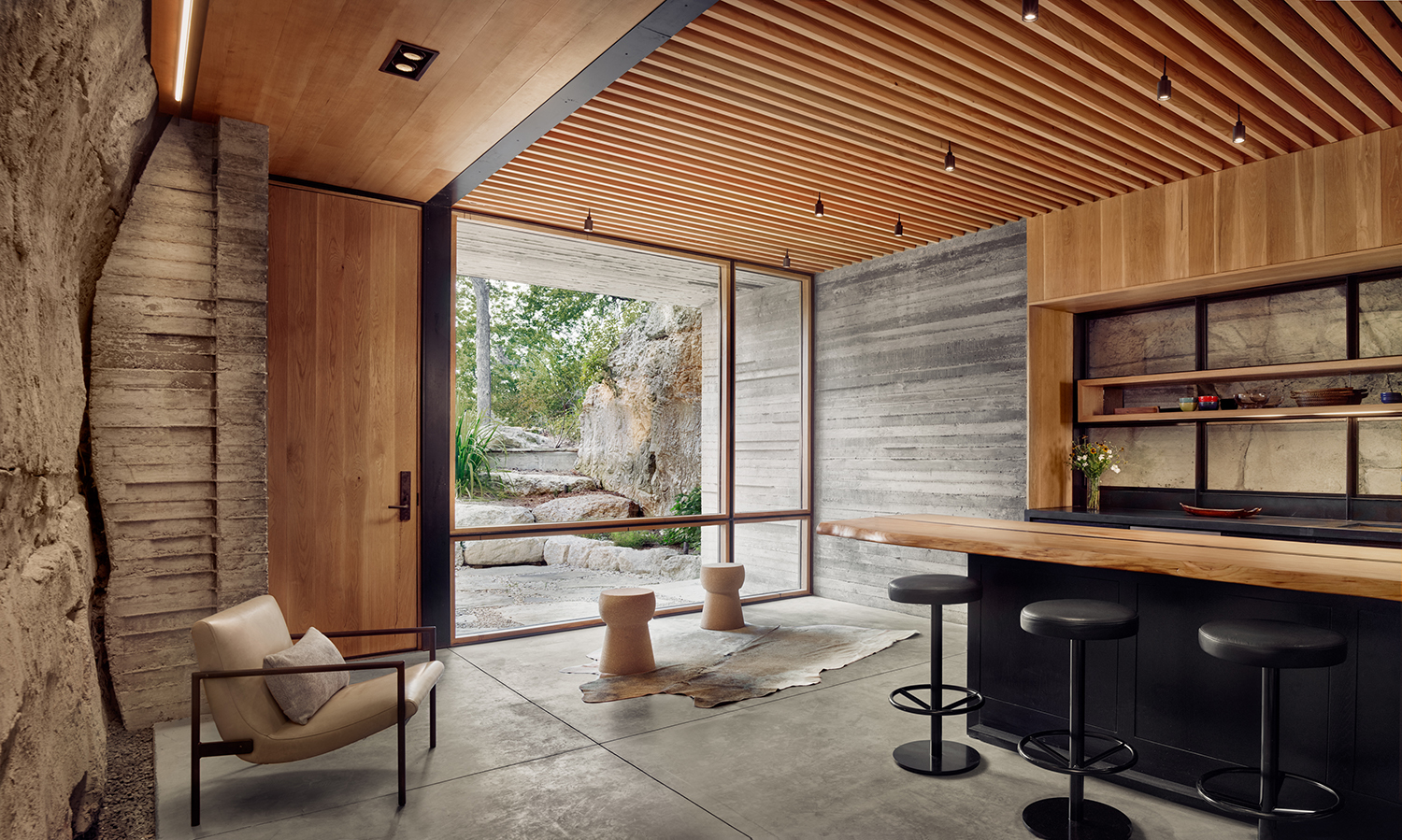
Clayton Korte’s wine cave is a beautiful and practical space. Its subterranean location provides ideal conditions for wine storage, while its forest surroundings provide the stunning materiality shown within. A mix of white oak, Douglass fir and ebonized timbers give the mostly concrete interior warmth and character. The attention to detail helps the new and the old seamlessly coexist as the tasting lounge, bar, wine cellar, and restroom are all tucked into the existing tunnel.
